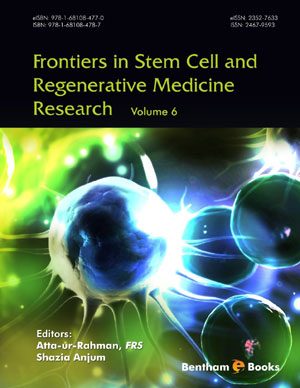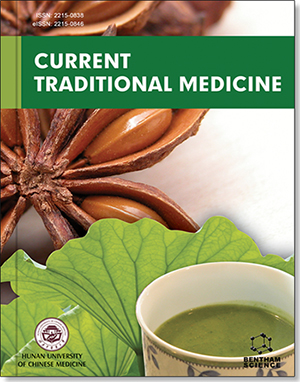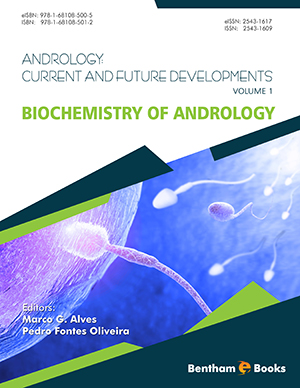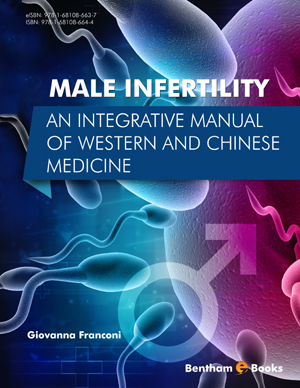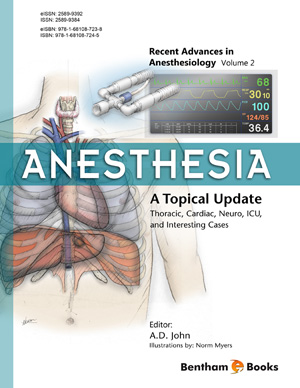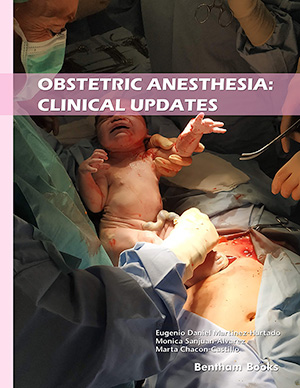Book Volume 6
List of Contributors
Page: ii-iv (3)
Author: Atta-ur Rahman and Shazia Anjum
DOI: 10.2174/9781681084770117060002
The Emerging Role of Mesenchymal Stem Cell Secretome in Cartilage Regeneration
Page: 1-20 (20)
Author: Wei Seong Toh
DOI: 10.2174/9781681084770117060003
PDF Price: $30
Abstract
Articular cartilage has a limited capacity to repair following injury. As a result, cartilage injuries often progress to serious joint disorders such as osteoarthritis. Mesenchymal stem cells (MSCs) are currently being evaluated in clinical trials as the therapeutic cell source for treatment of cartilage lesions and osteoarthritis. In addition to their differentiation potential, it is widely accepted that the beneficial actions of MSCs can also be mediated by their secretome. Of note, it has been demonstrated that MSCs are able to secrete a broad range of trophic factors and matrix molecules in their secretome to modulate the injured tissue environment and direct regenerative processes including cell migration, proliferation and differentiation to mediate overall tissue regeneration. The study of MSC secretome not only allows a better mechanistic understanding of the role of MSCs in tissue repair and disease treatment, but also enables the potential development of the next-generation, ready-to-use, highlyamenable and ‘cell-free’ therapeutics for clinical application. In this chapter, we present the latest understanding of MSC secretome and its components as a new paradigm for the treatment of cartilage lesions and osteoarthritis.
The Potential Clinical Application of Mesenchymal Stem Cells from the Dental Pulp (DPSCs) for Bone Regeneration
Page: 21-70 (50)
Author: Ana Rita Caseiro, Rui Alvites, Sílvia Santos Pedrosa, José Miguel Campos, Inês Leal Reis, José Domingos Santos, Carla Mendonça, Luís Miguel Atayde and Ana Colette Maurício
DOI: 10.2174/9781681084770117060004
PDF Price: $30
Abstract
The skeleton has the vital role of providing support and protection to all body organs, as well as to function as storage system for ions and other components essential to its homeostasis, also presenting essential function in the movement and posture of the individual. Bone fractures are a fairly common situation affecting individuals of all ages, but gain importance when concomitant pathologies are present or when the bone lesions’ extension exceeds the tissues’ intrinsic healing capabilities. As such, biomedical research has invested in unveiling adequate therapies to aid in those cases. The tissue engineering field has therefore evolved in the direction of developing biomaterials and scaffolds to structure, support and promote bone ingrowth, and in developing strategies to optimize these biomaterials in vivo performance, by including cell-based therapies and growth factors. Herein, we discuss one promising strategy for the optimization of these hybrid systems, through the association of biomaterials to a specific source of mesenchymal stem cells: the dental pulp stem cells. Dental pulp stem cells can be found in individuals of any age, and can be easily isolated from deciduous and definitive teeth, expanded and cryopreserved for further use. These cells are capable of differentiating towards multiple lineages, presenting great potential for osteo-differentiation. Dental pulp stem cells have been demonstrated to incorporate diverse biomaterial systems and promote mineral deposition both in vitro and in vivo, aiming at the reconstruction of osseous defects, in either experimental or clinical situations. The mesenchymal stem cells from the dental pulp can also be found and isolated from many species other than humans, granting them potential to be implemented not only in human medicine but also in veterinary care practices, and in regenerative strategies for other organs and tissues, such as dental reconstruction and nervous system regeneration.
Mesenchymal Stem Cells in Regenerative Medicine: The Challenges and the Opportunities
Page: 71-104 (34)
Author: Chen Kan, Lijun Chen, Yangyang Hu, Haimei Lu and Lixin Kan
DOI: 10.2174/9781681084770117060005
PDF Price: $30
Abstract
Regenerative medicine generally aims at re-establishing the normal functions by replacing the damaged body parts through stem cells or other biomedical approaches. The tremendous opportunities of mesenchymal stem cells (MSCs) in regenerative medicine have long been recognized. However, this potential “off-theshelf” therapeutic product is still facing daunting challenges. In this chapter, we intend to update the recent progresses and highlight the opportunities and the key challenges in the field. Our discussion has direct implications for identifying new directions for the future basic research as well as clinical applications of MSCs.
Liver Regeneration: An update on the Role of Non- Parenchymal Cells
Page: 105-127 (23)
Author: Beatriz Arteta, Antonia Alvarez, Joana Marquez, Aitor Benedicto and Enrique Hilario
DOI: 10.2174/9781681084770117060006
PDF Price: $30
Abstract
Many advances have been made during last years in the field of liver regeneration. Current studies underline the importance of liver progenitor cells (LPCs) as one of the sources for constructing bioartificial livers (BAL) and as source of cells for transplantation. However, the liver microenvironment is also formed by nonparenchymal cells (NPCs) that interact with LPCs and parenchymal cells during liver regeneration. Recent advances in liver tissue engineering have shown the importance of NPCs in extracorporeal systems, such as bioreactors for BAL or in several systems of 3D culture in combination with either hepatocytes, hepatoblast or LPCs. A precise knowledge of the functional role and the relationships between the diverse liver cell types is of great importance in the development of a liver organoid. Thus, this review focuses on the role of NPCs during liver regeneration in regard to their relationship with LPCs, and their potential use in 3D and extracorporeal systems in order to improve their efficacy and thus, their potential to be in the clinical setting.
Cardiogenesis and Repair: Insights from Development and Clinical Trials
Page: 128-166 (39)
Author: Sheena Raju, Daniel McCulloch, Alister C. Ward and Chandra Viswanathan
DOI: 10.2174/9781681084770117060007
PDF Price: $30
Abstract
Cardiovascular diseases are major contributors to global mortality. Myocardial infarction represents a significant complication of one such disease that affects a very large population worldwide, with the ischemic region and the resultant scar tissue generated reducing cardiac function and becoming a focus for recurrent infarctions. Several stem cell therapy approaches aimed at regenerating the nonfunctional myocardium have emerged using multipotent and pluripotent stem cells. However, many of the pre-clinical and clinical trials have not yielded the anticipated outcomes, and so different strategies are now being explored to achieve regeneration. The failure of these stem cell therapies may be partially attributable to the dearth of information on human cardiac developmental and regenerative pathways. However, numerous studies have investigated cardiogenesis and heart regeneration in model organisms, which have provided considerable insights into the processes of cardiac development, and other studies on the differentiation of pluripotent stem cells have largely corroborated these findings. Here we review heart development in different organisms, supplemented with insights from stem cell biology and clinical studies, which will underpin the development of effective stem cell treatments for myocardial infarction and other cardiac insults.
The Role of Ca2+ Signalling in the Differentiation of Embryonic Stem Cells (ESCs) into Cardiomyocytes
Page: 167-187 (21)
Author: Baixia Hao, Wenjie Wei, Sarah E. Webb, Andrew L. Miller and Jianbo Yue
DOI: 10.2174/9781681084770117060008
PDF Price: $30
Abstract
Embryonic stem cells (ESCs) possess the capability of self-renewal and pluripotency. They can propagate indefinitely and differentiate into any type of cell derived from the endoderm, mesoderm and ectoderm. This makes them ideal for basic research as well as for the development of treatments and cures for a variety of different diseases. This is especially so for developing methods to treat heart disease, where they might be used for screening cardiovascular drugs or for improving transplantation procedures in a clinical application. Thus, understanding the pathways involved in the regulation of the differentiation of ESCs into cardiomyocytes and developing efficient and reliable methods to induce differentiation, are key to the progress of cardiac research. In this chapter, the main methods currently used to induce the differentiation of ESCs into cardiomyocytes are reviewed. These include the use of embryoid body (EB)-dependent cultures, two-dimensional (2D) monolayer cultures, and the co-culture of human ESCs (and iPSCs) with mouse visceral endoderm-like stromal (END-2) cells. We also present a broad overview of the different Ca2+ signalling events that are known to occur during the differentiation of ESCs into cardiomyocytes. These include: 1) Ca2+ mobilization from the endoplasmic reticulum (ER)/sarcoplasmic reticulum (SR) mediated by inositol 1,4,5-trisphosphate receptors (IP3Rs) and ryanodine receptors (RyRs); 2) the possible involvement of cluster of differentiation 38 (CD38)/cyclic adenosine diphosphate ribose (cADPR) signalling; and 3) the influx of Ca2+ from the extracellular medium via L-type Ca2+ channels (LTCCs), store-operated Ca2+ entry (SOCE), transient receptor potential vanilloid 1 (TRPV1), and transient receptor potential canonical 3 (TRPC3) channels. Moreover, the role of the sarco/endoplasmic reticulum Ca2+-ATPase (SERCA), Na+/Ca2+ exchanger (NCX) and calreticulin in regulating cardiomyocyte differentiation by maintaining Ca2+ homeostasis is also described. Understanding how Ca2+ signalling regulates the differentiation of ESCs into cardiomyocytes might provide valuable clues for the development of efficacious treatments for cardiovascular disease.
Regenerative Cell-Based Therapies to Combat Neurodegenerative Disorders
Page: 188-205 (18)
Author: Zareen Amtul
DOI: 10.2174/9781681084770117060009
PDF Price: $30
Abstract
This chapter is a brief overview of the burden of neurodegenerative diseases, notably Alzheimer’s disease, on society, the short falls of current drug therapies and emphasis on the reasons to increase our efforts in developing regenerative medicinebased stem cell therapeutics. The chapter further provides caution on unsettled translational concerns that are necessary to settle before proceeding with this innovative treatment to the clinic, in addition to highlighting the promising basic strides made in stem cell therapy of neurological disorders.
Stem Cell Transplantation: Is this the Future Solution for Parkinson's Disease?
Page: 206-240 (35)
Author: José Rubén García- Montes and René Drucker-Colín
DOI: 10.2174/9781681084770117060010
PDF Price: $30
Abstract
Significant effort in the past three decades has been dedicated to the concept of restoring normal neurological functions through stem cell transplants, in devastating neurodegenerative diseases including Parkinson's disease. The aim of this chapter is to present an objective and up-to-date progress in this field. Specifically, the successes as well as the failures and the lessons learned from these outcomes towards further achievements in regenerative therapy are discussed. We build an easily understandable progression from basics to more complex issues and the current challenges in optimizing stem cell therapy in treatment of Parkinson's disease.
Subject Index
Page: 241-250 (10)
Author: Atta-ur Rahman and Shazia Anjum
DOI: 10.2174/9781681084770117060011
Introduction
Stem cell and regenerative medicine research is a hot area of research which promises to change the face of medicine as it will be practiced in the years to come. Challenges in the 21st century to combat diseases such as cancer, Alzheimer and related diseases may well be addressed employing stem cell therapies and tissue regeneration. Frontiers in Stem Cell and Regenerative Medicine Research is essential reading for researchers seeking updates in stem cell therapeutics and regenerative medicine. The sixth volume of this series features reviews on roles of mesenchymal stem cells in cartilage regeneration and bone regeneration, liver regeneration, cardiogenesis, cardiomyocyte differentiation, and regenerative therapy for neurodegenerative disorders.

